
|
|
|
|
|
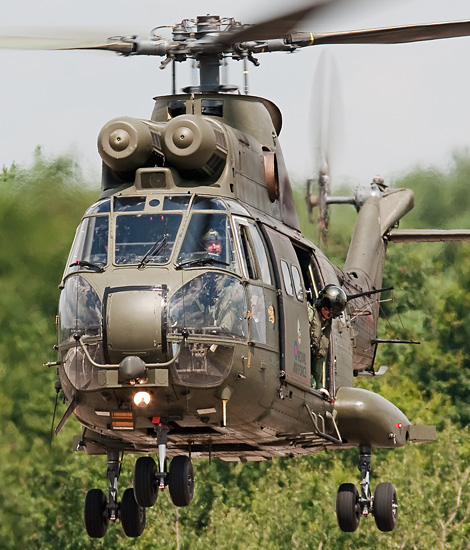
|
Helicopters at the Spottersday; Kleine-Brogel, July 17, 2007
Thee Spottersday at KB, Part 2; Text and Photograph's by Alex van Noye
There were a lot of helicopters involved in the exercise that was held today besides all the fighters at the
Spottersday at Kleine-Brogel. The helicopters were mainly from Belgium, but this year also a SA330 Super Puma
from the United Kingdom participated in the exercise. It was a nice combination of helicopters.
A squadron was founded within the Royal Air Force to assist the artillery batteries during the Second World War.
This new unit was known as no 651 Air OP (Observation Post) Squadron and was equipped with the American Taylor
Craft sport-plane aircraft. The only purpose of this new unit was to bring a pilot observer of the artillery in
the air in a very short time. The observer would communicate the tactical situation to the ground troops. The
Belgian government decided in 1946 after the Second World War to organize the Army according to the British
model. This model separated the complete army into three divisions, namely; the Army, the Air Force and the
Navy. The Belgian section of the RAF was founded in October, 1946. This unit is called the no 369 Air Observation
Post Squadron and it was based at Brasschaat. The no 369 AOP Squadron was just like the other British AOP
Squadrons equipped with 22 light, unarmed aircraft such as the Auster. On April 15, 1954, the unit is divided
into two new units, namely; no 15 Squadron at Brasschaat and no 16 Squadron at Butzweilerhof. Both units are
placed under the command of the army. The word Squadron is replaced by the abbreviation LtAvn which stands for
"Light Aviation”. Both units are therefore referred to as LtAvn15 and LtAvn16.
On October 26, 1959 the first Sud Aviation Allouette II helicopters arrived on Belgian soil after a flight
from France. The helicopters are based at Butzweilerhof. A total of 39 Allouette II helicopters were purchased
by the Belgian Light Aviation. In total there are four units flying this type which are distributed between
the two fields Brasschaat and Butzweilerhof. The Allouette replaced the outdated Piper Cub. On May 22, 1976
the first of a total of twelve ordered BN-2A Britain Norman Islander arrived. This aircraft would replace the
Dornier Do-27. This two engine aircraft is deployed for patrol duties. It was phased out in 2003. Currently
there are a number of these aircraft in active service at the Belgian coast guard. The third aircraft for the
Belgian Light Aviation was the
|
|
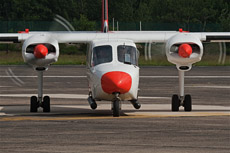
|
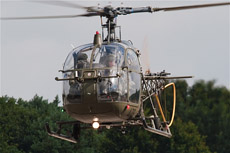
|
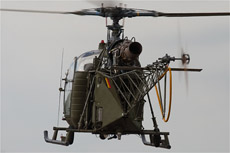
|
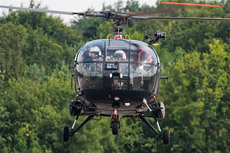
|
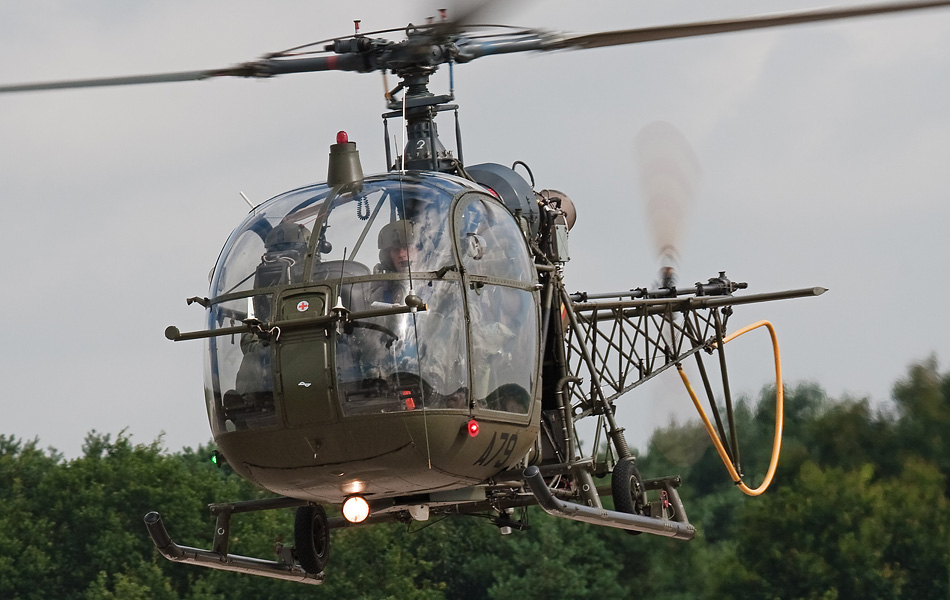
|
Augusta A-109. The first Augusta A-109 was delivered to the Belgian Army on January 13, 1992. The helicopter
was of the type A-109BA and was assigned to the 17th and 18th Squadron which is part of the LtAvn15 at Brasschaat.
The Allouette II at Brasschaat was retired after 32 years of service. The A-109 helicopters were going to be part
of an anti-tank Battalion. In total, the Belgian Army received 46 A-109s. The helicopters flew both from Brasschaat
and Bierset. The helicopters from Butzweilerhof were moved from Butzweilerhof to Bierset in 1993.
The Belgian government decided that the helicopters would be assigned to the air component from July, 2004.
As a result of this reorganization, the name Light Aviation was renamed to Heliwing. The units are therefore no
longer assigned to the Army battalions, but now they are assigned to the Air Force as a Squadron. The Heliwing
is based at Bierset from now on and it operates in three groups. Brasschaat was closed after this reorganization.
The first group is a flying group and consists of; a Staff, the 16th, 17th and 18th Squadron which operates the
A109BA, a flight communication unit which flies the Allouette II and finally the 15th OCTU Squadron for the
conversion of new pilots to the A109. The second group is the 255th Maintenance Group (255MGP). Finally, the
third group is a support group (Sp Gp). The number of A109's is reduced from 46 to 32 helicopters. The
helicopters have different configurations, namely; 10 anti-tank helicopters for the TOW role, 5 helicopters
are equipped with rocket launchers, 7 helicopters are equipped for the observation role, 5 helicopters are
equipped with Mag (7.62 mm) guns and 5 helicopters are suitable for Medevac. The 16th Squadron flies the A109,
while the Communication Flight uses the Allouette II.
A number of Belgian helicopters arrived at Kleine-Brogel in the morning hours. The first helicopter which
arrived was an Allouette II. It hovered at a low height in front of me; therefore it was possible to shoot
a few close-up photos. The second helicopter which came in for the Spottersday was an Allouette III of the
Belgian Navy. This helicopter came from Koksijde in the western part of Belgium. This helicopter went into
a hover in front of my lens in front of the green background. I was very happy with this helicopter, because
I had never made a decent photo of it before. These helicopters flew to their landing spots in front of the
public. The last helicopter from Belgium which came in was the Sea-King. This helicopter was also from
Koksijde. This helicopter is in service with the SAR flight of the no 40 Squadron. The Belgian Air Force
has five of these helicopters in use.
During the Spottersday at Kleine-Brogel, a group of helicopters performed the CSAR exercise on base right
in front of the public. The first helicopter which took off was an Allouette II from Bierset. The helicopter
had the role of observer during the exercise. The British Puma at Kleine-Brogel had the task to pick up the
downed pilot on enemy territory. The Puma was escorted by two armed Augusta A-109s from Bierset. The Allouette
II located the pilot very quickly. He reported the position of the pilot to the team which came in to save him.
The two A-109s were looking for enemy activity on the terrain. They had instructions to clean the area. This
means that all enemies were kept at a safe distance. The British Puma entered the landing zone. This large
helicopter landed on the grass strip along the runway and picked up the pilot. Two Belgian F-16s provided air
support during this action. A number of enemies were identified and these had to be destroyed. The Two A-109s
were protecting the Puma and the two F-16s destroyed enemy batteries which were designated by the Allouette II.
All the helicopters landed in front of my lens on the concrete platform after the exercise. Because of this I
was able to shoot decent photos of all helicopters. The Spottersday at Kleine-Brogel was just like other years
again a big success.
|
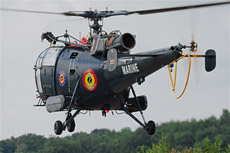
|
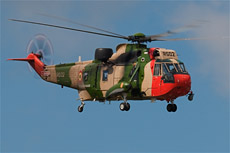
|
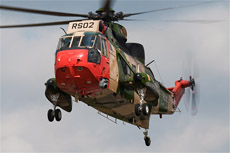
|
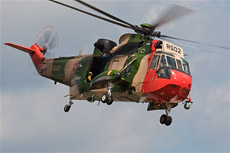
|
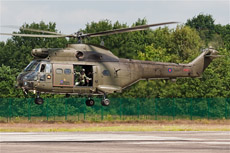
|
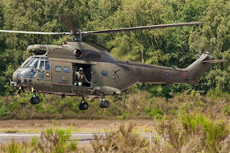
|
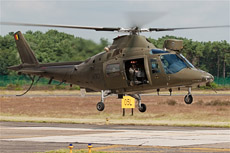
|
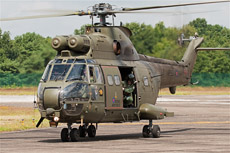
|
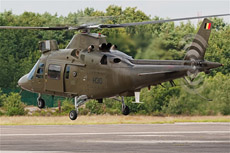
|
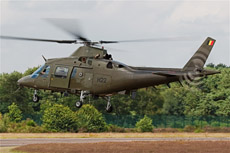
|
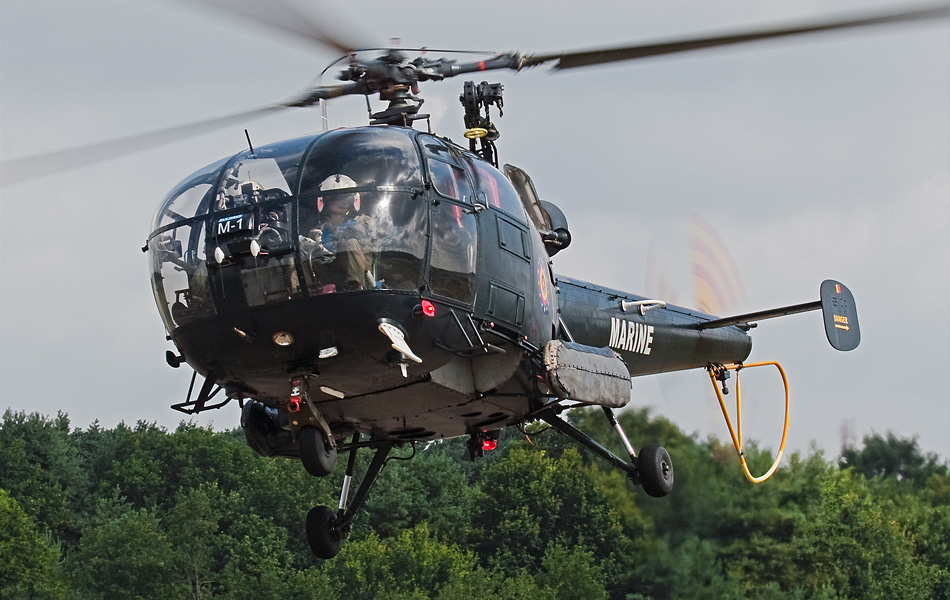
|
|
|

|







